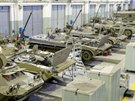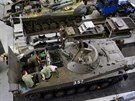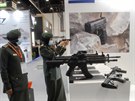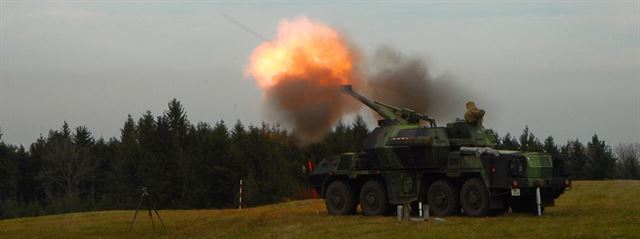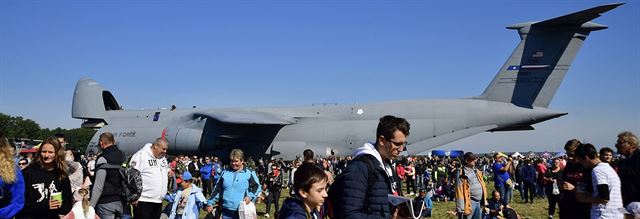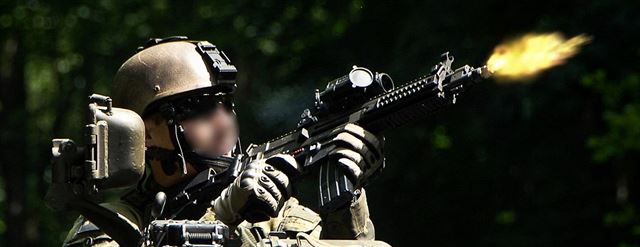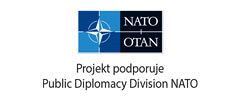The analysis of satellite images of Sukhoi’s production plant in Komsomolsk on Amur was done exclusively for natoaktual.cz by Czech technology company SpaceKnow.
Its unique application for pictorial coverage IMINT(Imagery Intelligence) can automatically keep track of large areas practically anywhere in the world and analyze what’s happening in there using satellite data and artificial intelligence.
The algorithm of automatic detection and classification of aircrafts by SpaceKnow examined the changes on a series of high-quality SkySat satellite images from Planet Labs from April 2020 to October 2023. And it captured some interesting details.
While in 2020, the Su-35 production facility typically had no more than two aircrafts on the racks at the same time, the number ranged from 11 to 16 fighters the following year.
The automatic detection algorithm recorded higher number of the Su-35 machines during the year after the Russian invasion in Ukraine in February 2022. While in April the number of fighters was 19, in October it was 30 fighter jets „parked“ on the adjacent stands by the assembly halls.
A very similar situation happened in September 2023 when the satellites detected 31 Su-35 aircraft. The last analyzed image comes from October and shows 29 planes.
SpaceKnow pointed out in an analysis that this is not hard data on how many new aircraft rolled off the production line. „However, we assume that the new aircraft are parked in adjacent areas by the assembly halls,“ the analysts said, adding that some unpainted machines can be seen in the images. And the location of the „parked“ aircraft has also changed repeatedly.
This corresponds with the conclusions of an extensive analysis by the American Center for European Policy Analysis (CEPA). It shows that Russia was able to secure the production of 30-35 new Su-35 aircraft in the past months. According to various estimates, Russia possesses 114 of these jets.
In fact, Vladimir Artyakov, deputy of the CEO of the state armaments colossus Rostec, under which Sukhoi belongs, bragged about „doubling“ the production of the Su-35 fighters.
„Our employees work relentlessly, in three shifts, with managers present at all times. Our main objective remains the mobilization of our workforce. The enterprises of the Rostec state corporation are determined to increase arms production,“ Artyakov claimed in an interview with a state television Rossiya-24.
Iran has expressed serious interested in as many as 24 Su-35 fighters originally made for Egypt.
British military intelligence believes that Russia has lost at least five of these jets since the beginning of its invasion in Ukraine. The Russians appear to have shot down the aircraft themselves in at least one case.
On 7th February Russian president Vladimir Putin himself marked the modernization of Russian air forces as a tough task on which it is necessary to work intensively and with special attention. „Only a few of the world’s countries are able to create a series of modern aircraft. and Russia is among those.“ TASS news agency quoted the Kremlin ruler.
Russia bypasses Western sanctions
However, the obtained intelligence images indicates that Russia is most likely capable of maintaining and even increasing production of its currently most advanced mass-produced fighter aircraft. This is despite Western sanctions on Russia imports of microchips and semiconductor components.
According to the experts, several hundred chips are needed to produce a top-quality Su-35 fighter. These are needed for all the key functions of the machine. From the radar, flight control systems, communication systems, navigation, visual processing and target acquisition to data links, displays and other systems in the cockpit.
But where does Russia get the high-tech components?
According to the recent finding of the Bloomberg agency at least half of the chips and other electronic components imported to Russia were American or European despite sanctions.
Examined Russian customs records showed that Moscow was getting US and EU-made chips in 2023 by re-exporting them from other countries which didn’t join the sanctions, such as Turkey, Kazakhstan and the United Arab Emirates.
Companies in these countries work like „in-betweeners“. Altogether, the components were worth up to $1.2 billion from Intel, AMD, Analog Devices, Infineon Technologies, STMicroelectronics or NXP Semiconductors.
The manufacturers themselves assure that they are respecting the sanctions, have ceased all business in Russia and are investigating how are their products getting to Russia illegally. The Financial Times described in detail how key components are being smuggled to Russia.
An investigation by the prestigious Nikkei Asia economic newspaper pointed out that another important channel is the re-export of parts, mainly from China.
They also examined Russian customs data but only from the beginning of the Russian invasion in Ukraine to the end of 2022. The records contain 3 292 transactions, each one of them being at least $100 000. About 70 per cent of them were labeled as products from American chip-makers such as Intel, AMD, Texas Instruments and others.
Three-quarter of the imports of these components were made by small or medium-sized companies from Hong Kong or mainland China. And a big number of those companies were established after the Russian invasion.
And through China or rather thanks to Chinese influence, the technologies of the French manufacturer Ommic were also to reach Russia. The company is one of the producers of circuits for 5G network equipment, satellites and also radars for fighter jets or missile guidance systems.
The scandal began last July when French authorities arrested the company’s leadership. Among the arrested were two French citizens and two people from China who were part of the company’s management.
According to the investigators a Chinese businessman acquired 94 % of Omnic’s stocks through an investment fund which he created right in France and then he became the company’s president in 2018. He put his own people in charge and „connected with his country’s defense industry“.
According to the investigators he tried to take over the know-how and bring the modern technologies developed at Omnic to China. And also to Russia. Some chips were exported to Chinese state armament companies using fake bills and technical declarations. And chips and technical informations then also ended up in the hands of a Russian state armament company. The shipments were to flow through China, India and Turkey.
And in number of cases, an executive designated by the Chinese owner was to hand over micro-circuits to Russian customers directly in person or send them under fake name in packages through mail until at least March 2023. However the management was already planning a new delivery route to Russia, using a fictional company created by its Chinese owner in Belgium as a in-betweener.
 Summit NATO 2023
Summit NATO 2023




 tisknout
tisknout 